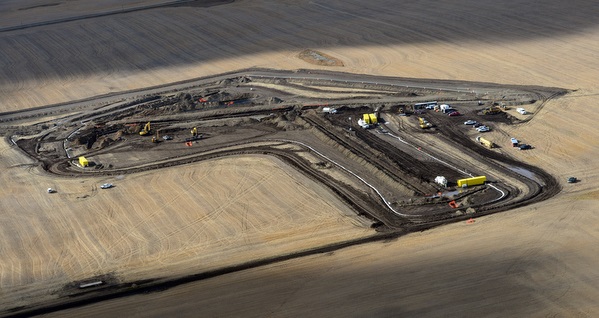Brian Kalk Column: Time For North Dakota To Take The Lead On Pipeline Safety

Most North Dakota citizens believe the development of our God given energy resources has been good for our state. Oil, coal, wind, and natural gas, along with our booming agricultural sector, and the best work force in America, have combined to make us the envy of the nation. Our entire state has prospered these past years, thanks in large part to our energy and agricultural industries. But, with every opportunity comes challenges that must be addressed and dealt with.
One challenge that faces us is public safety, as it relates to the transportation and delivery of oil. We do not yet have adequate pipeline capacity, a situation that is exacerbated by the refusal of the Administration to approve the Keystone XL pipeline. So, our producers have had to rely, increasingly, on rail transit to move our oil. Of course, the answer is to increase our pipeline capacity. But, as the oil pipeline spill at Tioga demonstrates, there are challenges to be met to insure that our citizens and their property are safe.
Currently, your Public Service Commission regulates natural gas intrastate transmission and distribution lines in the State of North Dakota. These lines are inspected on a yearly basis and more often if required. The regulation of pipelines handling oil and hazardous liquids is handled, for the present, by the U.S. Pipeline and Hazardous Material Safety Administration, or PHMSA. They inspect these pipelines roughly every three years. Currently, PHMSA does not have a federal inspector stationed in North Dakota.
Last week, a meeting was held between PHMSA and the North Dakota PSC. One of the items discussed was the possibility that the PSC would institute, with the approval of PHMSA, a state controlled safety program for oil and hazardous liquids pipelines within North Dakota. The federal officials at the meeting said they would support and approve such a program should the state meet federal requirements. It would mean that we would adopt existing federal pipeline standards and to have qualified, trained state inspectors. I would point out that we already do just that with our natural gas pipeline safety program. We meet federal standards and have trained inspectors out in the field.
Under current state law, your PSC already has the authority to institute such a program. It would require approval from the Governor’s office and the State Legislature for the funding and added staff.
It is important to note that we would not add new regulations. Our goal is to increase the safety and security of intra-state pipelines. As our energy industry continues to grow, the need for pipelines will increase. Our citizens must have the confidence that these pipelines will be safe and secure. It will be our intention that these pipelines will be inspected by North Dakota inspectors and have a local “touch point” on the program.
It is important to also emphasize that, by having local state control and having a more vigorous inspection regime in place, we reduce the incentive and ability of those who would see our pipelines as targets of opportunity for disruption and other attacks. The closer to home the control of our natural resources distribution, the more confidence our citizens will have as we move forward with more pipeline construction. We need to have the ability to move product, via pipelines, so as to lessen the dependence of our producers on rail transportation. The Casselton accident was too close for comfort. Pipelines, properly sited, constructed, and maintained, are the best option to move our energy products. Our agricultural producers are being hampered by the lack of rail transportation of their products.
We will be in consultation with the Governor’s office and the Legislature as we consider this proposal. The Governor and the Legislature share our determination to improve and enhance safety and security as it relates to our pipelines, both natural gas and oil.




